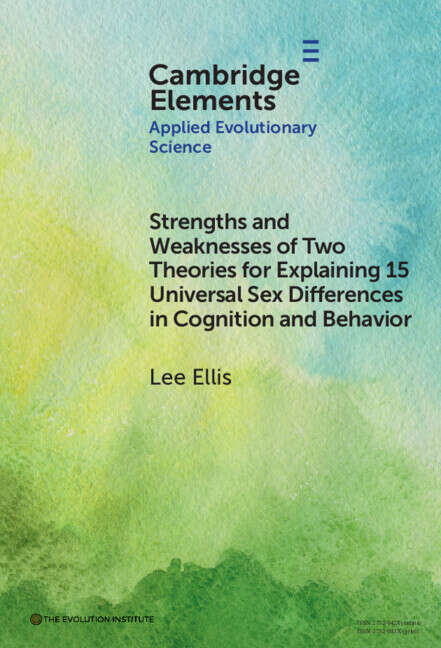Strengths and Weaknesses of Two Theories for Explaining 15 Universal Sex Differences in Cognition and Behavior (Elements in Applied Evolutionary Science)
By:
Sign Up Now!
Already a Member? Log In
You must be logged into Bookshare to access this title.
Learn about membership options,
or view our freely available titles.
- Synopsis
- Social role theory and evolutionary neuroandrogenic (ENA) theory are compared regarding how well they can explain 15 cognitive and behavioral sex differences that appear to be present in all human cultures. In essence, social role theory argues that, except for males being larger and more muscular and only females being able to bear children, cognitive and behavioral differences between the sexes result from sociocultural training and expectations. On the other hand, ENA theory attributes sex differences in cognition and behavior to evolved differential exposure of male and female brains to sex hormones, especially testosterone. The existence of 15 nearly certain universal sex differences in cognitive and behavioral traits was documented in a recently published book based on findings from over 40,000 empirical studies. This Element documents that, while both theories have explanatory power, ENA theory surpasses social role theory in explaining the universality of most of the 15 traits.
- Copyright:
- 2025
Book Details
- Book Quality:
- Publisher Quality
- Book Size:
- 75 Pages
- ISBN-13:
- 9781009581059
- Related ISBNs:
- 9781009581004, 9781009581004
- Publisher:
- Cambridge University Press
- Date of Addition:
- 09/22/25
- Copyrighted By:
- Lee Ellis
- Adult content:
- No
- Language:
- English
- Has Image Descriptions:
- No
- Categories:
- Nonfiction, Psychology
- Submitted By:
- Bookshare Staff
- Usage Restrictions:
- This is a copyrighted book.
